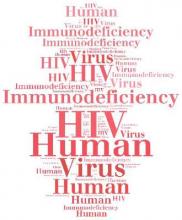BOSTON – Getting people who are infected with HIV onto early antiretroviral therapy (ART) and keeping them on it may be the best way to reduce HIV-related deaths and simplify the care continuum or “cascade,” said investigators who advocate universal, immediate ART eligibility and access.
A study of HIV deaths and care patterns in four African countries, presented at the Conference on Retroviruses and Opportunistic Infections, suggests that HIV deaths could be reduced significantly if patients have early therapeutic intervention and remain in care.
“We’re all very aware that the provision of antiretroviral therapy has dramatically reduced mortality from HIV in sub-Saharan Africa, but data from population cohort studies in Eastern and Southern Africa show us that mortality rates among HIV positive adults still remain three to six times greater than HIV-negative adults in settings with mature ART programs. So the question that we set out to answer was why do these HIV deaths still continue to occur in settings where ART is widely available?” said coinvestigator Dr. Jeffrey Eaton from Imperial College London.
Dr. Eaton and his colleagues conducted a study to identify the stages in the care cascade where most deaths occur, in the hope of pinpointing targets for interventions that have could have the greatest effect on improving care.
To do this, they designed a study to model the previous HIV care experience of people who died from the infection. They reviewed empirical data from clinical and vital statistic registries from Western Cape, South Africa, and from population cohorts in Uganda, Malawi, and South Africa.
For example, death registration records from South Africa linked to clinical records for 3,161 adult HIV deaths in 2011 showed that 25% of patients were either not diagnosed or not linked to care, 35% never started on ART, 10% had been on ART for less than 6 months, 20% were lost from ART care or had a gap longer than 3 months in the past year, and just 10% were continuously in care.
The investigators also analyzed data from four mathematical models that were calibrated to HIV epidemics and to patterns of care and utilization of treatment in Kenya, Malawi, Rwanda and South Africa. All four models estimated how HIV deaths were distributed across each stage of care, and projected the distribution over the next 10 years, with the assumption that current patterns of HIV care use and retention would be continued. In addition, three of the models simulated what would happen if all patients linked to care were started on immediate ART therapy.
Dr. Eaton and his colleagues examined the care cascade from the time of HIV diagnosis, linkage to care, pre–antiretroviral therapy care, ART initiation, and survival and retention on ART.
‘Dramatic declines in HIV deaths’
“All of the models simulated the dramatic declines in HIV deaths as treatments became available, and the models also indicated that persons who have initiated ART understandably account for an increasing proportion of HIV deaths going into the future. But the projections estimate that 25%-40% of HIV deaths will continue to be among persons never initiated on ART,” Dr. Eaton said.
Looking at HIV death across the care cascade, the models indicated that only 10%-30% of HIV-related deaths would likely occur among patients who are continuously on
“ART for 6 months or more. Deaths among HIV-positive people who were disengaged from care were projected to account for a “substantial” proportion of all HIV deaths in all four models – from 21%-44% of all HIV deaths projected for 2025.
If present conditions were to continue, the models predict, from 9%-22% of HIV deaths from 2016 through 2025 would occur in patients who were linked to care but for one reason or another were never started on ART.
The models project immediate ART initiation could reduce HIV deaths by between 6%-14% during 2016-2025, mostly by removing opportunities for patients to disengage before treatment initiation, rather than by direct prevention or therapeutic benefits of early ART, the investigators stated.
Their findings suggest that “indicators based on monitoring the effectiveness of ART among patients in clinics miss this population [of patients never diagnosed or linked to care], and thus we feel are insufficient for evaluating the overall effectiveness of ART programs,” Dr. Eaton said.
An HIV/AIDS specialist who was not involved in the study commented in an interview that Dr. Eaton’s approach is an innovative way to identify gaps in care that can contribute to HIV-related deaths.
“Some big points that I came away with were that people who know their [HIV] status but are not in care, that’s contributing to mortality, and then as we get people more into care, mortality is going to accrue if and when people fall out of care,” said Dr. Diane Havlir of the University of California, San Francisco.



